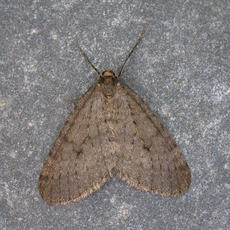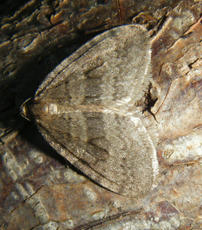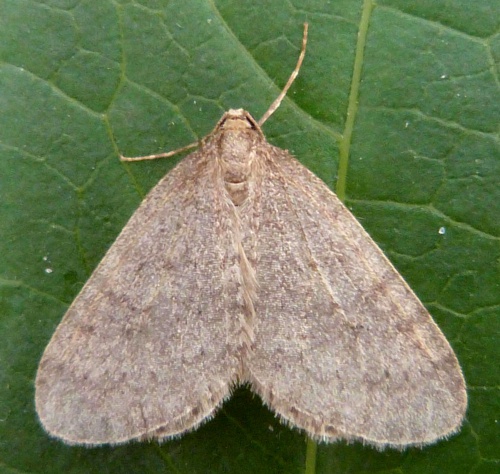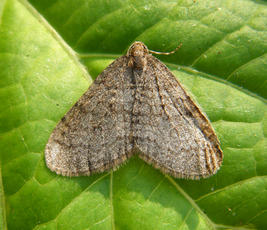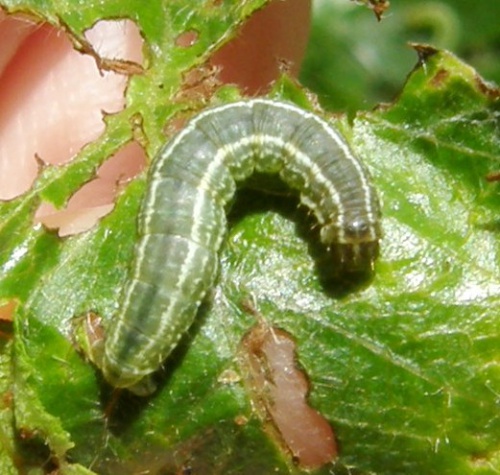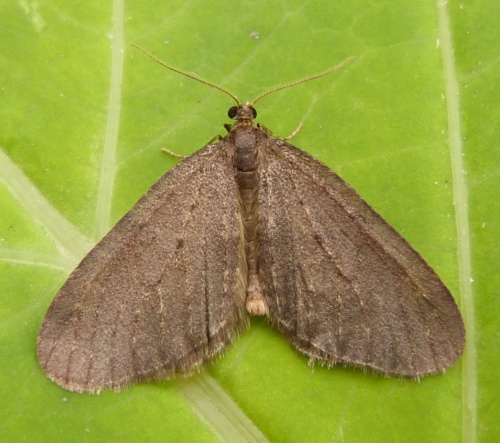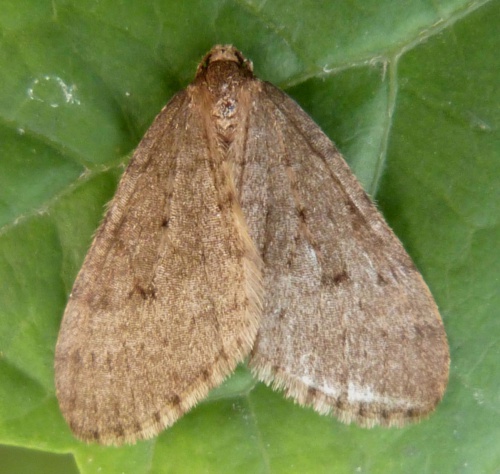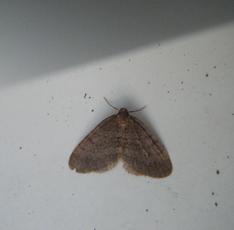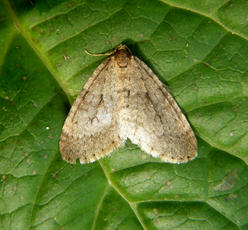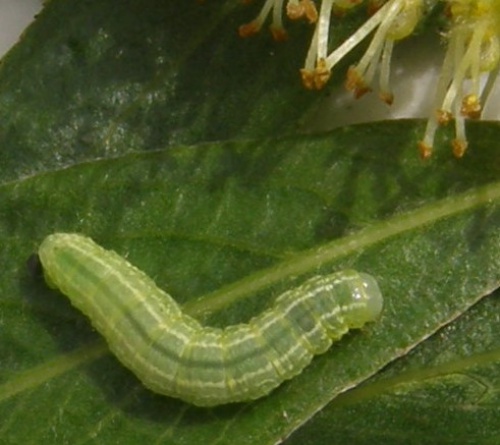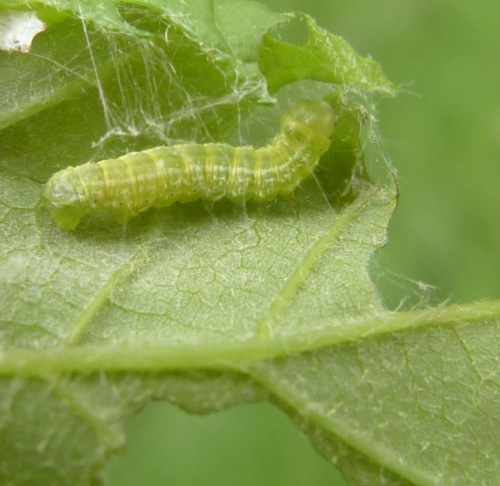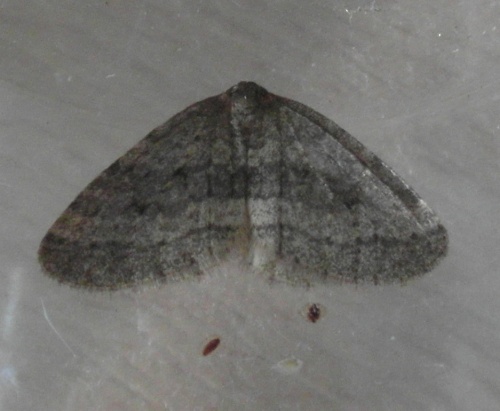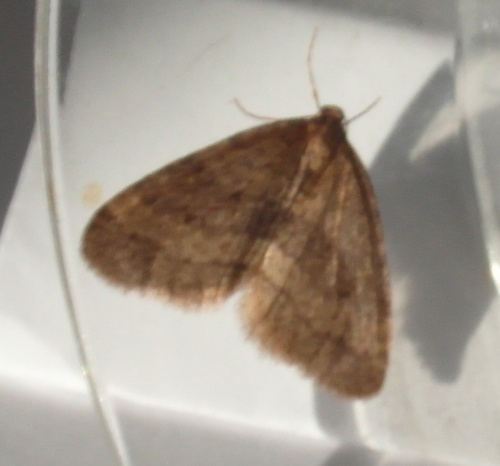Winter Moth - Operophtera brumata
Wingspan 22-28 mm. The males are drab light to dark brown with a darker central forewing band (although this is sometimes indistinct) and a brownish hindwing. The females are virtually wingless.
Often seen near car headlights, especially if close to trees and bushes.
From late autumn through to January or February.
The virtually wingless females crawl up tree-trunks to await the arrival of males. The larvae feed on a range of trees and shrubs, as well as moorland species such as Heather. Sometimes the larvae occur in great numbers, reaching pest status and occasionally completely defoliating small trees.
A common species in most of Britain. In a recent survey to determine the status of all macro moths in Britain this species was classified as common.
Common in Leicestershire and Rutland. L&R Moth Group status = A (common and resident)
Leicestershire & Rutland Map
Enter a town or village to see local records
MAP KEY:
Yellow squares = NBN records (all known data)
Coloured circles = NatureSpot records: 2020+ | 2015-2019 | pre-2015
UK Map
Species profile
- Common names
- Winter Moth
- Species group:
- Moths
- Kingdom:
- Animalia
- Order:
- Lepidoptera
- Family:
- Geometridae
- Records on NatureSpot:
- 157
- First record:
- 07/12/1950 (Wesley, Isaac)
- Last record:
- 11/12/2023 (Hagley, Neil)
Total records by month
% of records within its species group
10km squares with records
The latest images and records displayed below include those awaiting verification checks so we cannot guarantee that every identification is correct. Once accepted, the record displays a green tick.
In the Latest Records section, click on the header to sort A-Z, and again to sort Z-A. Use the header boxes to filter the list.


